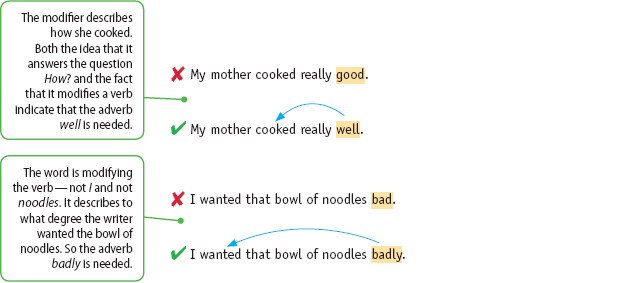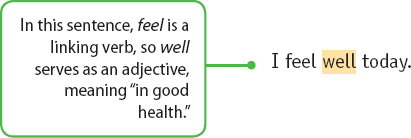Know When to Use Good, Well, Bad, and Badly
Many people have these words mixed up in their minds, in part because they’ve heard good and bad said informally in situations where more formal language would call for well and badly. In formal writing, good and bad are adjectives; well is usually an adverb, though it can also serve as an adjective meaning “healthy”; and badly is an adverb. So when you’re reaching for one of these words to use as an adverb, always use well or badly.

The result is better yet if the adverb is placed next to the verb it modifies:

 that bowl of noodles.
that bowl of noodles.
(Learn more about the placement of modifiers.)
Good and bad, which are adjectives, modify nouns and pronouns. They can appear before a noun or following a linking verb. When placed after linking verbs, these adjectives serve as subject complements:
The noodles taste good.
The garbage smells bad.
Although well is usually an adverb, it can also be used correctly as an adjective when it means “healthy”:
